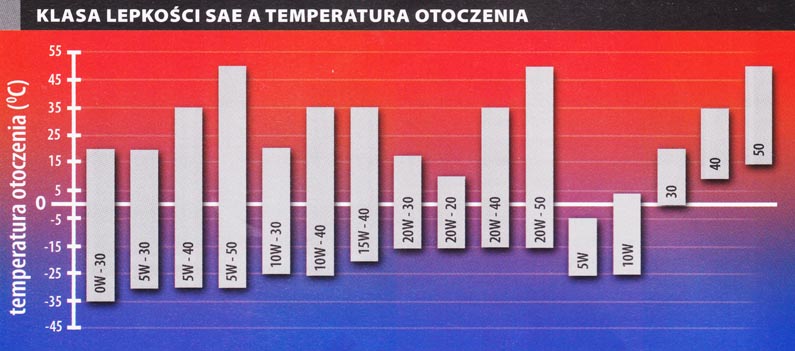 So is synthetic oil better than mineral oil?? Not always, if only for the most prosaic reason – prices. Synthetic oils are still more expensive. Moreover, they are not suitable for heavily worn-out engines. Good washing properties mean, that such oil washes away deposits, thanks to which the old unit remains sealed. In addition, synthetic oils react aggressively with rubber elements – that was the cause of their bad start. This problem has already been dealt with in modern motorcycles.
So is synthetic oil better than mineral oil?? Not always, if only for the most prosaic reason – prices. Synthetic oils are still more expensive. Moreover, they are not suitable for heavily worn-out engines. Good washing properties mean, that such oil washes away deposits, thanks to which the old unit remains sealed. In addition, synthetic oils react aggressively with rubber elements – that was the cause of their bad start. This problem has already been dealt with in modern motorcycles.
VISCOSITY
Basic parameter, which must be taken into account when choosing an oil, that's its viscosity. The engine manufacturer specifies, which is most appropriate in this very mechanism – the relevant parameters are shown in detail in the operating instructions. There you will probably find a table defining the range of permissible viscosities depending on average external temperatures, in which we operate the car.
A very clear viscosity grading system has been developed by SAE – american association of automotive engineers. The fact that the oil belongs to a particular class is determined by the viscosity of the oil at low temperatures and the viscosity at high temperature, and the pumpability temperature, that is the ability of oil to flow to the oil pump and to ensure adequate pressure in the lines in the initial phase of the drive unit operation.
SAE J MAR viscosity grading 93 divides motor oils into eleven classes. The suitability of the oil for use in winter is determined by six classes marked with numbers, followed by the letter W (winter, that is winter), i.e.. SAE OW, 5W, IOW, 15W, 20W, 25W. The lower the digit before the letter W, this oil can be used at lower ambient temperatures – In this case, the oil viscosity and pumpability test is performed at specific temperatures below 0 ° C.
There are five viscosity grades for determining the oil viscosity at engine operating temperature – SAE 20, 30, 40, 50, 60. The viscosity test is performed at 100 ° C. Engine oil, which has both the characteristics of winter oil, as well as the summer one, we call it all-season, which the standard speaks of, that its viscosity is in the range of one of the W classes at -18 ° C and one of the classes other than W at 100 ° C. Such oils are marked with a combination, e.g.. 15W-40, 10W-40, 5W-50 itp. Their main advantage is the possibility of operation regardless of the seasons of the year. We can assume, that for multi-season operation, the oil is all the better, im has the lower W notation, and the second marking must conform to the requirements of the manufacturer of the unit, because too low viscosity at operating temperature will lead to accelerated wear of the mechanisms, while too high – to an unnecessary increase in resistance to movement.
Oils with low viscosity grades from 0W-20 to 10W-40 can also meet the EC saving specification (Energy Conserying) introduced by API, that is, the American Oil Institute. The oil test compares the fuel consumption of a standard engine lubricated with the tested oil and the reference oil SAE 20W-30. If the observed fuel savings are at least 1,5%, the oil obtains the EC I certificate. Reduction of consumption by more than 2,7% grants the right to the EC II certificate, a above 3,9% – EC III.





